Top 7 Call reduction strategies to elevate the customer experience



Unmanageable call volumes are the fastest way to burn out your customer service team.
Call demand surges can overwhelm support teams, strain call center productivity, and make it difficult to offer personalized services.
Call reduction techniques can alleviate this strain on your support team, freeing them up to offer a top-of-the-line customer experience.
In this article, you’ll learn call reduction strategies to reduce call volumes, increase customer satisfaction, and boost retention.
Phone calls offer a valuable way to build customer loyalty. They allow support agents to:
However, high call volumes can overwhelm support teams, leaving agents stretched thin, frustrated, and unable to meet critical benchmarks like customer satisfaction (CSAT) and wait time targets.
According to McKinsey, 61% of customer care employees report that high call volumes and staff turnover reduce team efficiency. Heavy call volumes also impact metrics like Average Handle Time (AHT) and First Call Resolution (FCR).
When FCR rates are low, customers don’t get answers quickly, leading to more follow-up calls and increased wait times. As AHT rises, customers spend longer on the phone — a frustrating experience that often results in higher abandonment rates and unresolved issues.
One study shows that 63% of customers would rather receive a callback than wait on hold.
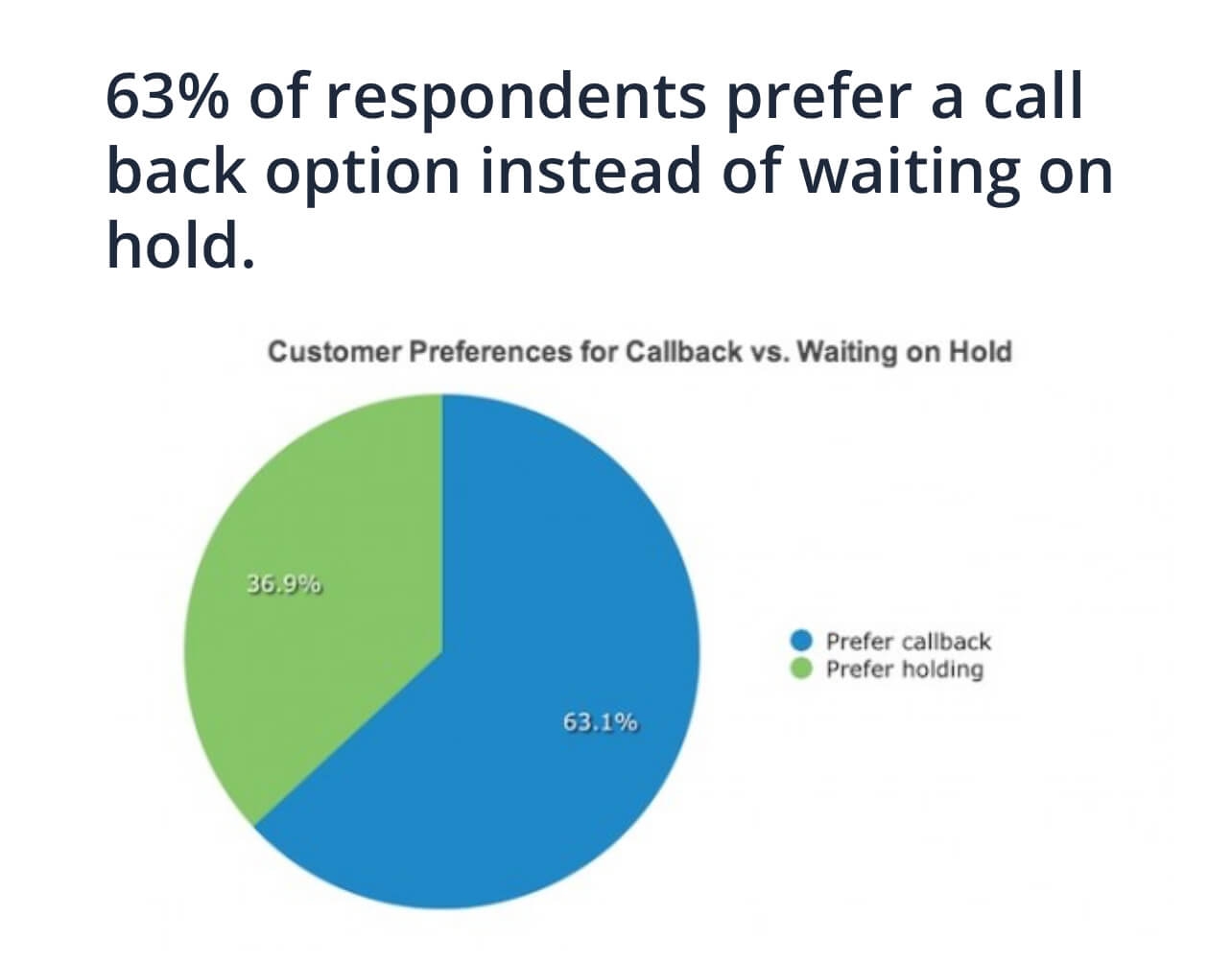
In the end, prolonged wait times and unresolved queries can damage brand reputation, as frustrated customers are more likely to leave negative reviews.
To counter this, companies are turning to call reduction solutions, with McKinsey noting that leaders are investing in self-service options to ease demand on support teams.
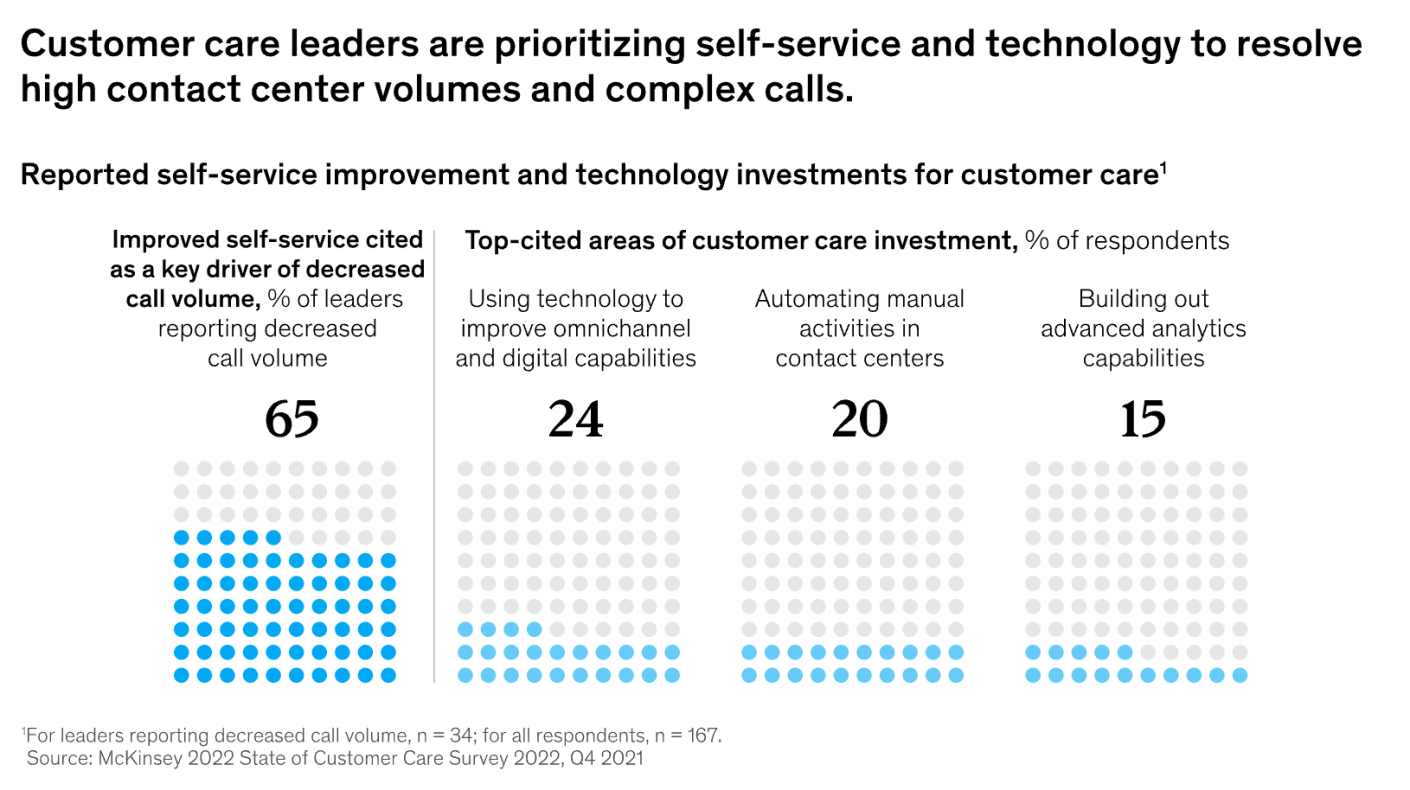
No one likes waiting longer for help. Providing customers with quick, reliable support solutions can enhance their experience and prevent revenue losses from poor service interactions.
For each of the strategies below, we’ll cover what they are, why they’re effective, and actionable tips you can use.
Customer complaints demand a fast resolution. According to HubSpot, 90% of customers expect a response within 10 minutes when they have an issue.
And when customers feel ignored, you lose the opportunity to build loyalty. They become frustrated, and 80% often switch to other companies that make them feel valued and appreciated.
For this reason, self-service options are critical to most businesses. They allow customers to quickly solve common issues without contacting the support team.
Common examples of self-service support options include:
Self-service platforms give customers immediate, 24/7 access to help. They minimize stress and disruption to create better experiences.
For example, Salesforce’s FAQ content covers various topics, from product features to pricing and support. It is designed to anticipate and address common questions so users can easily find answers.
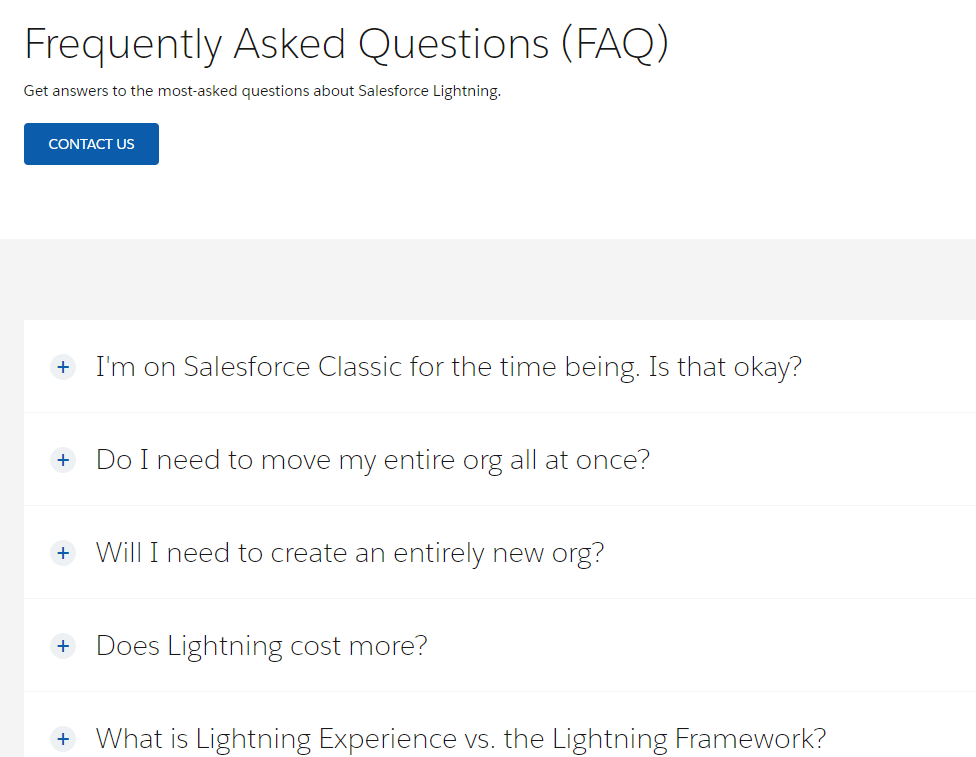
Knowledge bases are broader, with articles and guides that walk customers through troubleshooting processes or explain how to use specific features.
HubSpot offers in-depth documentation for all its products on its knowledge base. There are plenty of articles, tutorials, and troubleshooting guides — many of which use images and diagrams to illustrate complex concepts.

Forums allow customers to discuss issues and share solutions. Many are led by company advocates or power users, so customers can get near-instant insights from people who know their products well.
ClickUp’s community is a great example of an engaged forum that reduces the need for direct calls. Customers can search for answers, read product announcements, and even submit feature requests.
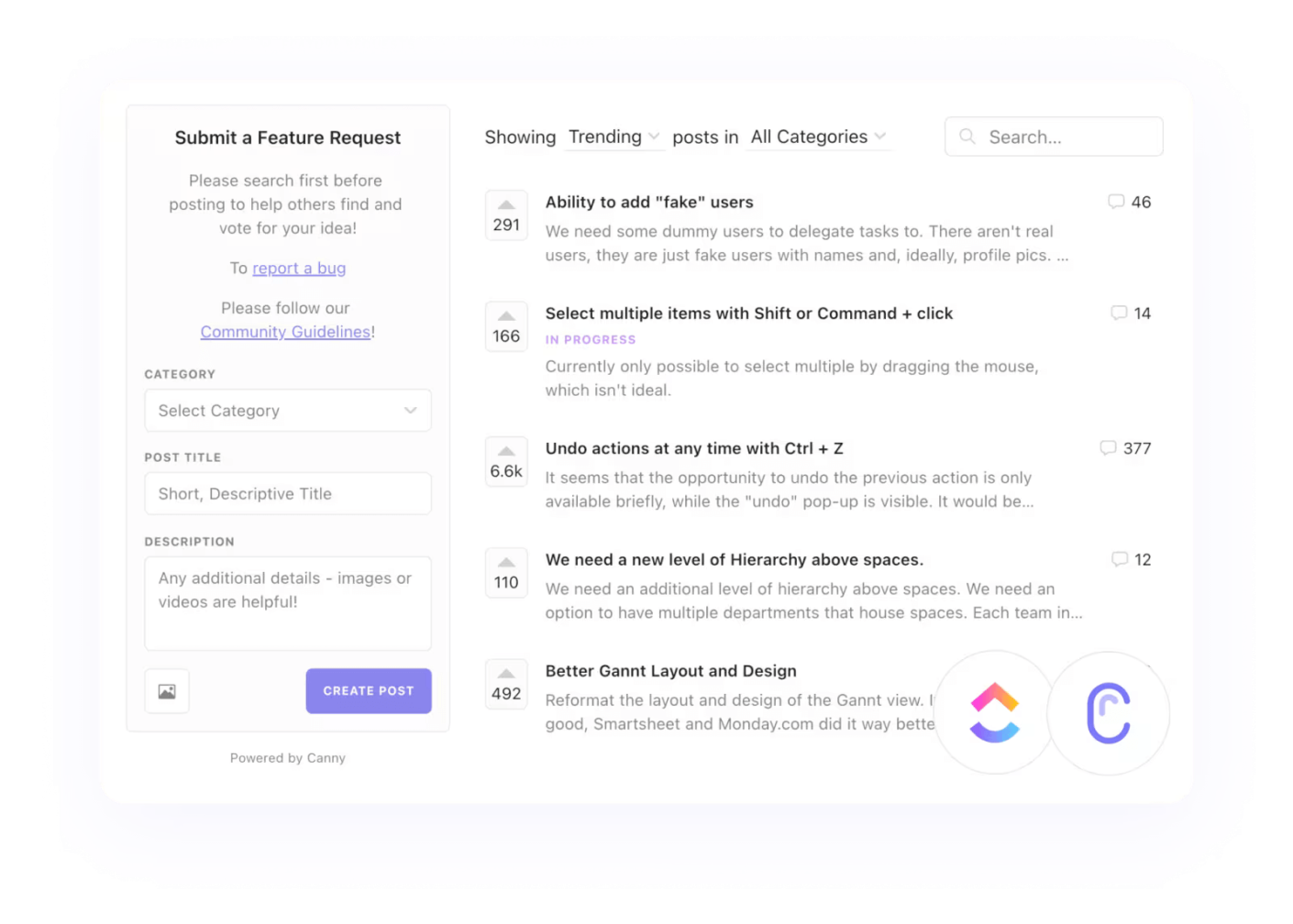
This saves time — for both customers and your business — to create a better overall experience.
You can build on this community idea by integrating feedback loops where customers can rate self-service interactions and provide feedback. Then you’ll know what works and what to improve.
Artificial intelligence (AI) chatbots provide automated 24/7 support by answering basic customer inquiries and guiding them through processes.
They’re built to respond to customer queries in multiple languages and deliver accurate responses based on support content without human intervention.
Many companies already see the benefits: 92% of customer relationship management (CRM) leaders say AI has improved their customer service time and 77% believe it will handle most ticket resolutions by 2025.
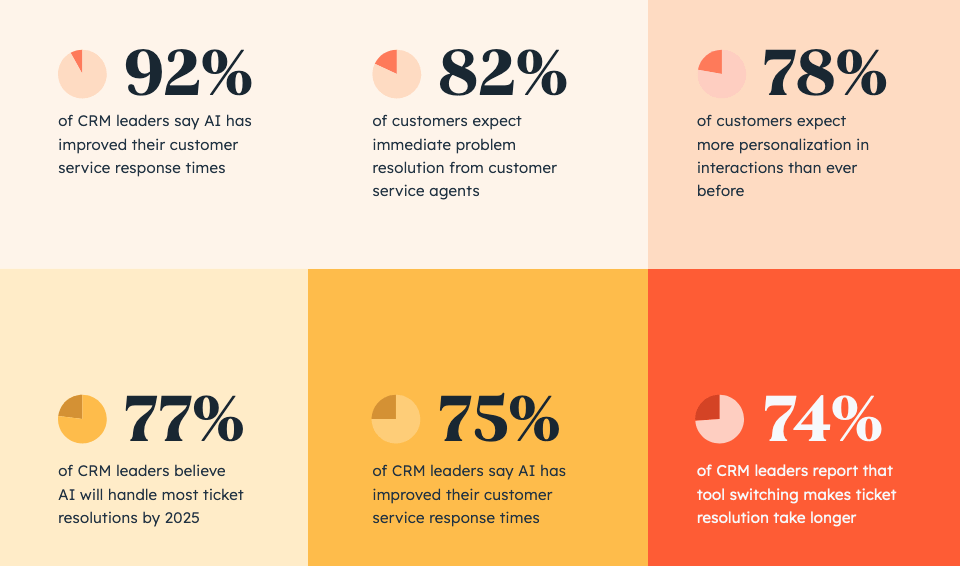
As stand-alone systems, chatbots can effectively understand customer queries using keywords, tags or phrases to resolve queries.
However, they can also pass on conversations to suitable agents when complex issues arise, ensuring services maintain their personalized, human touch when necessary.
Here’s Calendly’s chatbot in action:

It lets users type questions or select a common topic. After some automated interactions, the tool can determine whether human help is necessary to solve the customer’s issue. Users can also bypass the automation by directly asking for an agent.
To implement a chatbot, look for software that integrates with your CRM or support system and allows for customization. Many tools offer pre-built templates.
For the best results, you may need to train it with common customer questions and tailored responses.
You could take things a step further with AI agents.
Through models like machine learning, NLP, and even sentiment analysis, AI agents can understand more complex tasks than a chatbot and provide personalized support, resolving more complicated queries from start to finish.
There are also many ways to implement AI to ease the load for customer service agents. For example, ServiceNow AI Agents are embedded in the Now Platform, our powerful system of action for the enterprise. The Now Platform lets AI agents collaborate with your entire business to solve problems across every department. Kommunicate offers AI assistants for human customer service agents that surface generative answers during the call.
Over time, advanced AI solutions can learn from customer interactions to offer even better customer service with predictive models and forecasting.
It doesn’t have to be a case of AI agents and chatbots vs human customer service. AI can deal with repetitive queries, leaving your customer service team free to deal with more complex questions and interactions that require a human touch, like difficult customers.
With the right tools and insights, agents can better manage customer interactions and minimize follow-ups.
A unified platform like Salesforce Customer 360, HubSpot, or Pipedrive centralizes contact data, providing a full view of each customer’s journey. This includes service issues, past interactions, and purchase history. This information enables faster, more accurate resolutions.
Implementing such a tool can even put you ahead of your competitors.
In a Zendesk survey of support agents, 64% said having a single view of customer interactions would help them do their job better. Meanwhile, 62% wanted data that allowed them to personalize interactions.
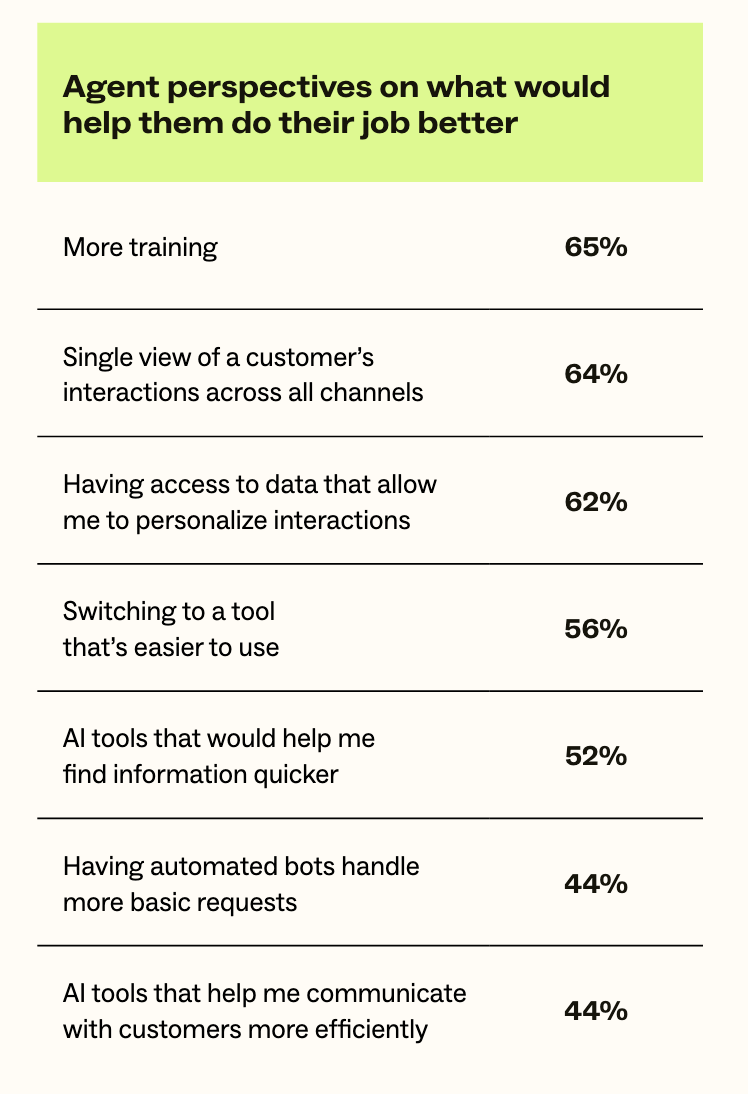
By providing agents with centralized data and efficient communication channels, businesses can deliver proactive, personalized support that leaves customers feeling valued.
As customer expectations continue to rise, those who invest in these solutions will not only reduce call volumes and operational costs but also enhance customer loyalty and satisfaction.
In an increasingly competitive market, the ability to provide seamless, efficient support isn’t just an advantage; it’s a game-changer.
Video-assisted troubleshooting allows your agents to see exactly what your customers see, making it easy for them to fix issues in real time.
With screen sharing and co-browsing, agents can visually guide customers through troubleshooting steps, minimizing misunderstandings, misinterpretations, and repeat calls.
This approach reduces the need for technician visits, saving time and customer support costs.
For example, Kiloutou, a leading European equipment rental company, saved €40,000 per year by using Apizee’s video-assisted support platform.
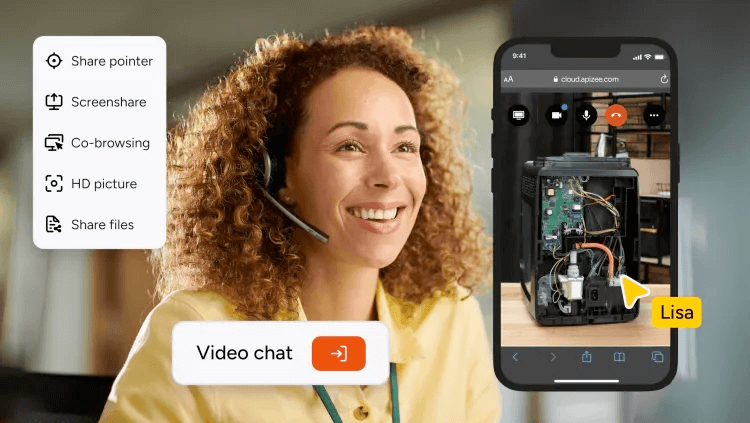
The tool allowed their agents to troubleshoot error messages, scan documents for faster processing, and eliminate 2,340 hours of travel time.
This led to increased customer satisfaction and a 25% first-call resolution rate.
Plus, Kiloutou says their customers request video support more and more:
We are really fans of this solution! Our customers are asking for it and are starting to have the reflex to ask for a video.
Remote video support technologies like this help companies build stronger customer relationships and teach users how to get the most out of their products.
By providing fast, face-to-face help without the need for field staff, agents humanize the support experience cost-efficiently. It fosters trust, loyalty, and advocacy, meaning fewer customer acquisition costs and a more profitable business.
Customer success teams can reduce call volumes by addressing potential issues before they arise, especially for high-ticket items like machinery or specialized equipment.
Engaging customers proactively — through onboarding calls and regular video check-ins — helps answer initial questions, introduce key features, and ensure customers use the product effectively from the start.
For example, if you sell industrial tools, your customer success teams could send a video walkthrough on setup and safety tips to prevent future calls about basic use.
B2C brands do this publicly to maximize reach and ease pressure on their support functions. Here’s a video from Google on getting started with the Android operating system:
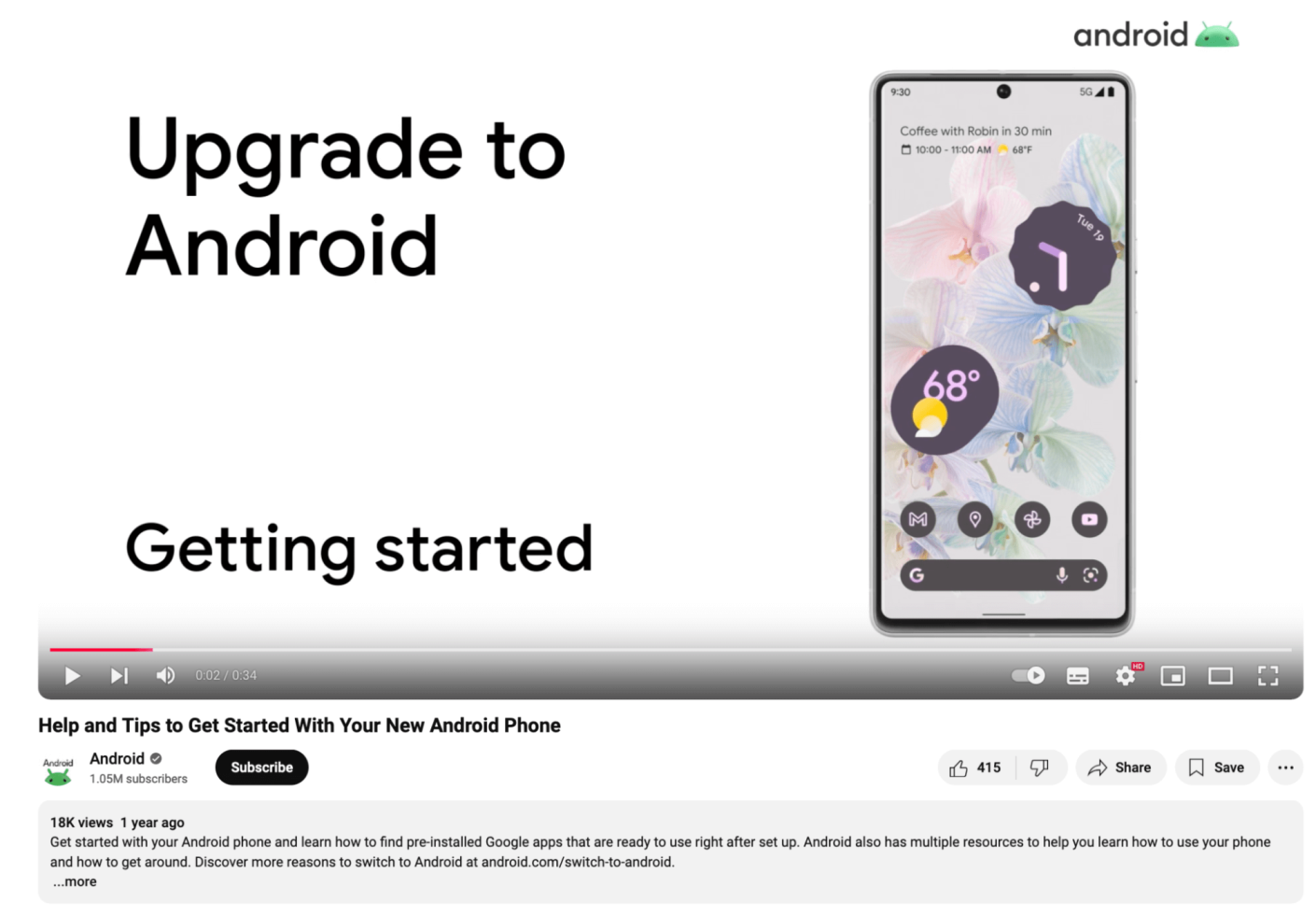
If you’re selling big-ticket items, even on a smaller scale, you can send more personalized support videos to strengthen your relationships.
Proactively reaching out with personalized texts, emails, or video messages about upcoming changes can also help reduce call volume.
For instance, an early text about a firmware update can prevent customers from calling about common update issues as they’d know a fix is imminent.
Effective onboarding reduces support calls by introducing your product, making a solid first impression, and addressing common questions. The aim is to give customers all the resources they need to succeed with minimal assistance.
Start with a “welcome” screen (or equivalent) and an onboarding checklist to help customers achieve “Aha” moments. This helps reduce the time it takes them to get value from your product.
For example, Tesla offers plenty of helpful “getting started” content to help drivers extract the maximum value from their investments.
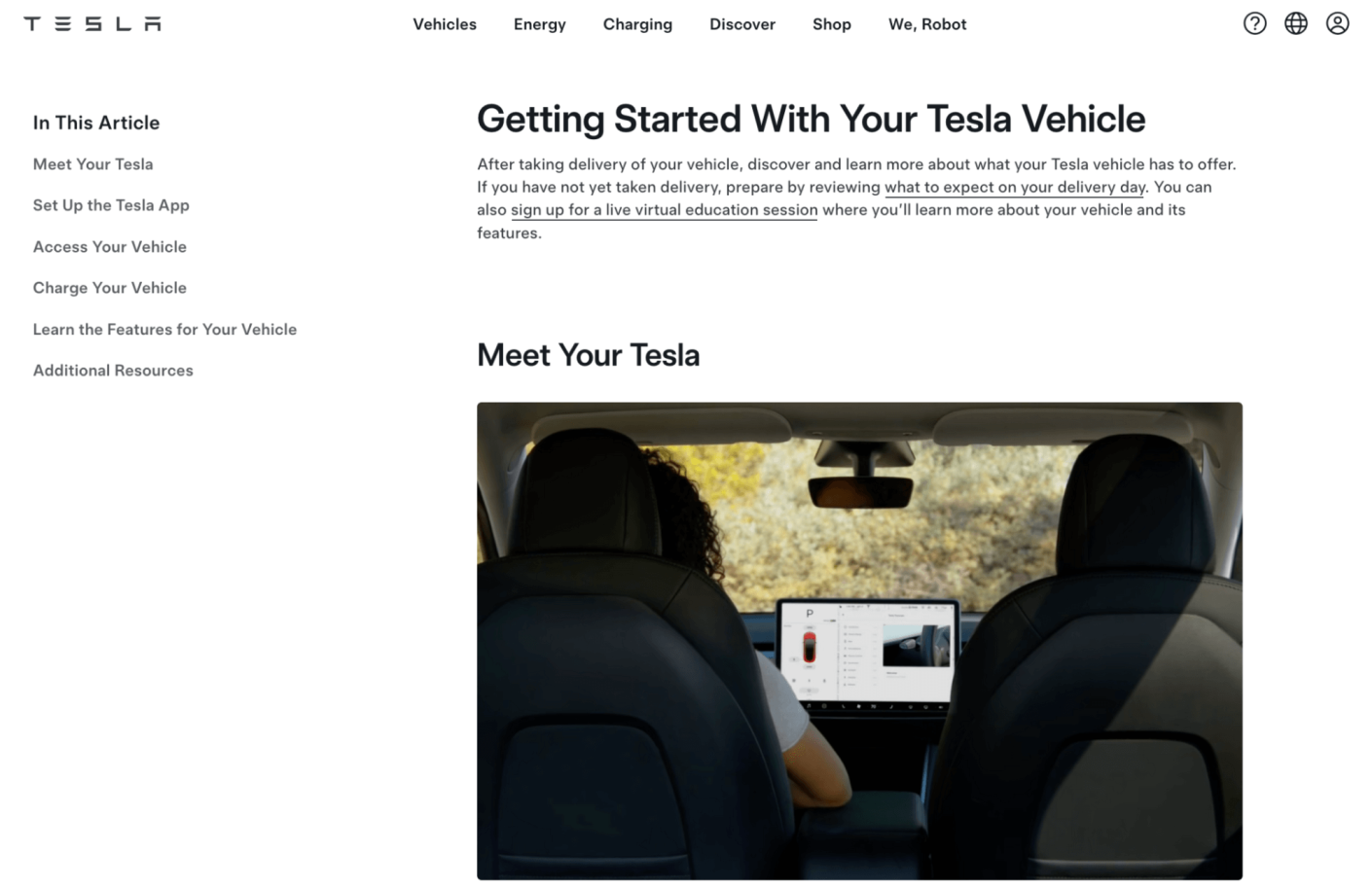
Of course, most of Tesla’s customers have owned cars before. But its vehicles boast unique features they’re unlikely to have seen before.
By ensuring customers know how to use them, Tesla minimizes friction, creates a smooth brand experience and, ultimately, reduces call volumes.
Technology is another sector where smooth onboarding is critical to lasting relationships (i.e., high retention rates and profitability).
If you sell software to businesses or individuals, guide them subtly with native tooltips. They’re less disruptive and pop up when users interact with new features.
For example, Airtable uses tooltips to introduce features and tell users what to do next.
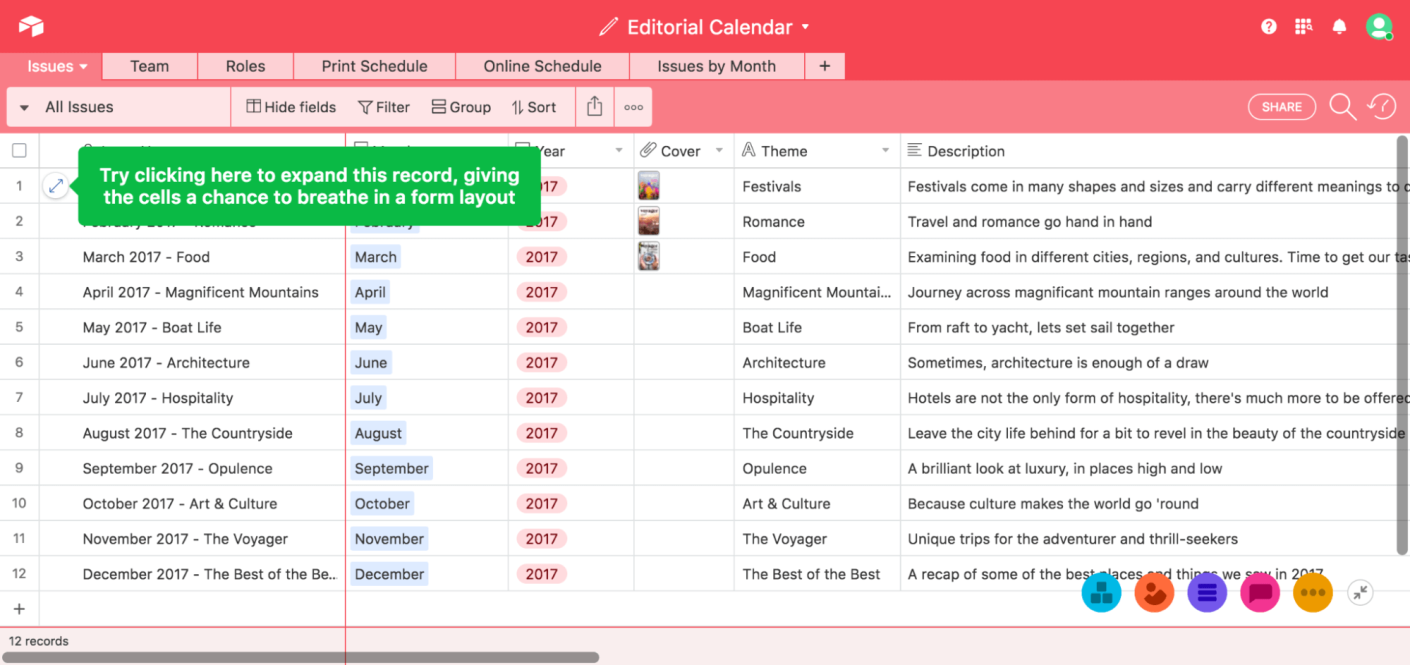
Give customers all the necessary information via a comprehensive knowledge base, FAQs, and step-by-step guides.
Provide content on an easily accessible and intuitive platform to minimize friction and set the right tone for your relationship — one of simplicity and convenience.
Guided screencasts and video walkthroughs help customers understand products faster.
You can use Apizee to create video tutorials and provide live, interactive demos through its video tools.
For example, financial planning software could have video walkthroughs to guide users through setup and budgeting features. This trains them on the basics as they familiarize themselves with the software.
After resolving customer issues on calls, follow up to collect feedback. This allows you to remove any remaining concerns and identify areas for improvement.
Once a ticket is closed, automate follow-ups to be sent within 24 hours to capture customers’ feedback while the experience is still fresh.
To demonstrate your commitment to customer satisfaction, incorporate follow-ups into your standard workflow and automate updates on ongoing issues.
All it takes is a simple email, like this template from Copper.
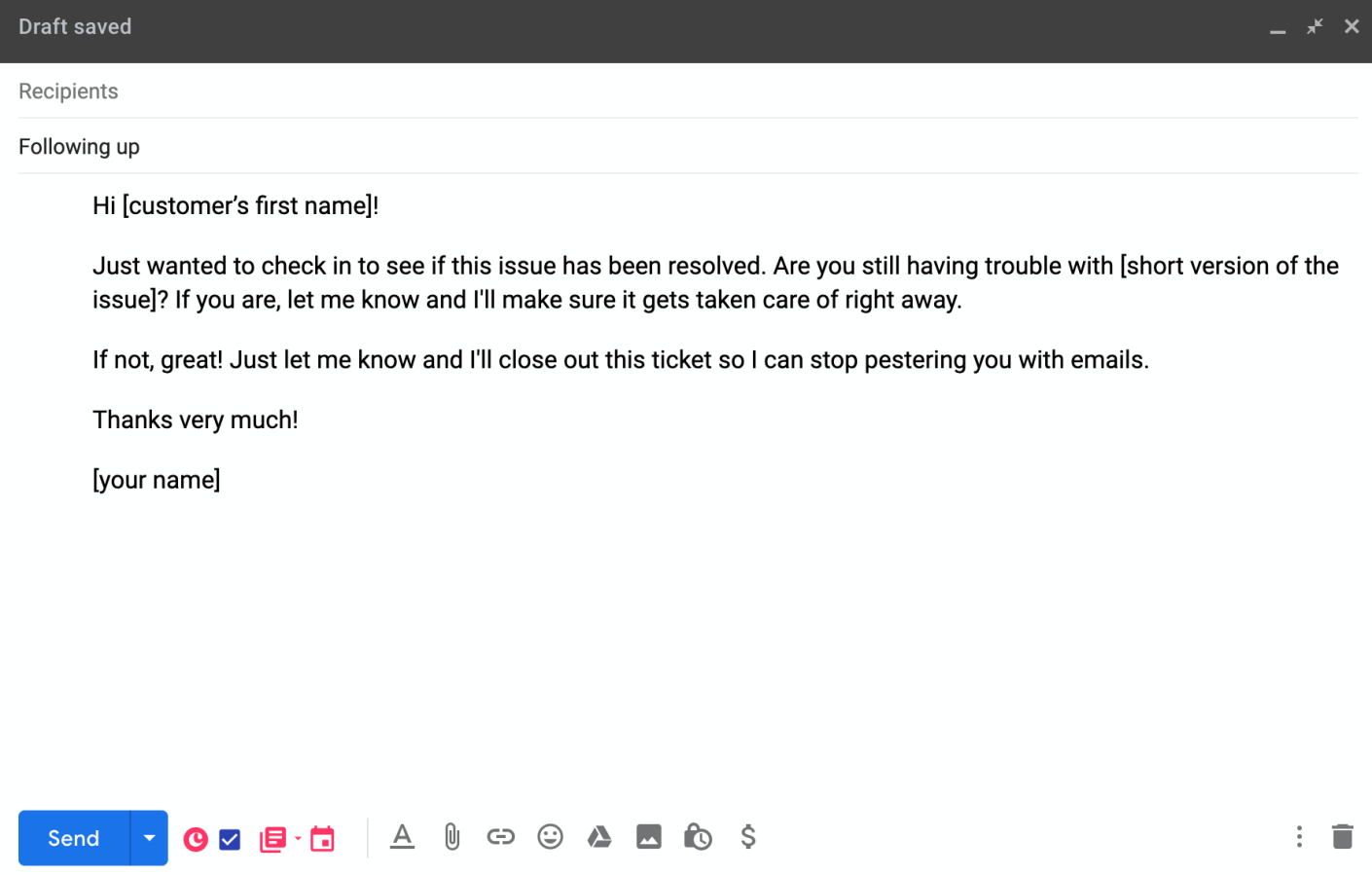
For even more effective and personalized interactions, Apizee provides advanced features to schedule follow-up calls or video check-ins. This gives customers extra reassurance while allowing agents to confirm their solution is effective.
Here are key metrics to track to ensure your approach reduces call volume while positively impacting other critical areas.
Call volume measures total incoming calls over a set period.
For example, if a call center receives 1,200 calls while agents are online for 40 hours, call volume per hour is 30 calls (1,200 calls / 40 hours = 30 calls per hour).
Lower call volumes allow support teams to spend more time on complex issues, provide high-quality customer interactions, and reduce the risk of burnout.
High customer satisfaction (CSAT) scores, high net promoter scores (NPS), and low dissatisfaction (DSAT) scores reflect positive customer experiences.
Calculate your CSAT score by dividing the number of satisfied survey responses by the total responses and multiplying by 100 to get a percentage.
Determine NPS by subtracting the percentage of detractors (people who wouldn’t recommend your business to others) from the percentage of promoters (advocates).
DSAT, meanwhile, is the percentage of dissatisfied survey responses over the total. For example, if out of 150 responses, 20 were “dissatisfied” ratings, the calculation would be: DSAT = (20 / 150) * 100 = 13.3%.
The first call resolution rate (FCR) measures how well agents resolve issues on first contact.
Calculate FCR by dividing issues resolved on the first call by total interactions. For example, if agents resolve 800 out of 100 customer inquiries on the first call, the FCR would be 80%.
High or growing FCR rates indicate that agents can address issues and keep customers happy.
Metrics like average handle time (AHT) and service levels (percentage of calls answered within a specific time, e.g., 80% within one minute) indicate agent productivity.
Reduced call volumes allow agents to dedicate more time to each call, improving customer satisfaction.
Over time, you can use the metrics above to predict high call volume periods and implement preventative measures to ease any strain on your resources.
For example, if you notice higher call volumes and lower CSAT scores during holiday seasons, you can hire seasonal support staff or offer overtime to prepare.
Forecasting call volumes is a three-step process:
Comparing forecasts to actual call volumes over a longer time helps you measure forecasting accuracy. You can then refine your approach, make more reliable predictions, and further improve resource planning.
As customer expectations evolve, businesses must adopt new technologies for fast, personalized support.
Remote video support like Apizee solves customer problems in one shot. There’s no need for repeat calls. This saves teams huge amounts of time, as 32% of calls in a call center are repeat calls.
It also humanizes and personalizes customer interactions. For complex customer issues, it can help defuse tense situations and build customer loyalty.
With Apizee’s comprehensive video support solutions, businesses can meet and exceed customers’ ever-growing expectations for great service and ultimate convenience.
One of Apizee’s most impactful success stories — as previously mentioned — is our collaboration with Kiloutou.
The company’s support team used Apizee’s video tools to guide customers through setups visually, minimizing truck rolls and service times.
This super-efficient remote support model lets its team manage more cases without compromising quality.
You can achieve similar in three simple steps:
Just like that, you’ve created a more personal, human support experience without overstretching your budget or team.
Discover how Apizee has assisted its customers in reducing call volumes and support time by exploring more customer success stories.
Reducing call volume eases your support team’s workload — but there’s more to it than just efficiency. It’s about creating a more customer-centric user experience to grow profitability.
Using methods like video support, AI chatbots, and proactive assistance, you can pre-empt customer needs, fix issues faster, and build trust.
For the best results, remember to track key metrics and use the insights you gain to drive your decision-making.
Try Apizee's remote visual support platform for more personalized interactions and better respond to customer needs.
Get a demoExplore the top customer service trends for 2026—a quick look at what’s shaping customer expectations and behaviors in the year ahead.
Customer service: trends not to miss in 2026
8 Dec 2025
Here is the list of best Call Center Conferences to attend in 2026. Check out the top events, summits and meetups globally that you can plan for this year.
List of Best Call Center Conferences to Attend in 2026
1 Dec 2025
Best Customer Experience Conferences to Attend in 2026
1 Dec 2025
Interested in our solutions?